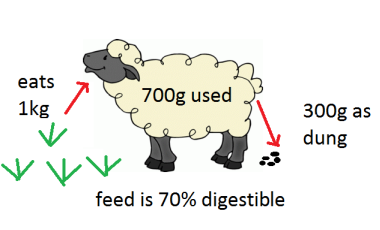Why feed test?
By Dr Sue Street
Why feed test? is a question some of you might have been asking yourselves, and the answer is simple. It allows you to:
- Understand the production potential of your feed
- Understand the suitability of your feed for maintenance, production, pregnant or lactating animals
- Think ahead and determine if supplementation is needed to achieve your intended livestock targets
- Determine a base for trading feed
- Evaluate your grain, hay and silage production systems
Without knowing the quality of your feed, you’re unable to predict the future outcome of your feed, thus knowledge of failure or success comes too late.
So what do I look for when I feed test?
There are a number of different aspects of feed testing that are important, they will be addressed below.
Dry matter (%)
Dry matter (DM) is when all the water has been removed from the fed. Dry matter is what contains all the energy, protein, minerals and vitamins, as water contains no nutritional value. Feed composition, diet formulation and feed costs are all expressed on a dry matter basis.
Examples of dry matter for different feeds:
- 90% Grain
- 85 – 88% hay
- 35 to 45% silage
Digestibility
 Digestibility is the expression of how much feed (DM) is digested (absorbed) by the animal under set conditions.
Digestibility is the expression of how much feed (DM) is digested (absorbed) by the animal under set conditions.
Dry matter digestibility = feed dry matter intake - faeces dry matter out /feed dry matter in (%)
Digestibility varies with livestock species, level of feeding and N supplementation. It is measured as both DMD and DOMD.
Energy
Energy is the most important nutrient, and is commonly the first limiting nutrient, especially in grazing livestock. Energy is the most important indicator of feed quality and is used to calculate whether stock are receiving enough energy for maintenance and production. Energy is measured as megajoules of metabolisable energy per kilogram of dry matter (MJME/kg DM).
Is the measure of energy available to the animals for:
- Maintenance
- Heat production
- Output production (wool/meat/milk/foetus)
ME is calculated in AFIA accredited labs using the following equations:
Forage: ME = 0.203 x DOMD – 3.001
Silage: ME = 0.16 x DOMD
Grains & Concentrates: ME = 0.858 + 0.138 x DOMD + 0.272 EE%
Protein
Protein is measured as crude protein (CP%). It is a measure of the nitrogen (N) content of the feed.
CP = N x 6.25
Is not usually the first limiting nutrient, but feed < 6% CP will limit rumen function. High ME requirement usually means higher needs for CP, as animals are more productive if protein and energy are balanced. Actively growing animals require more protein than animals that are just maintaining weight.
Fibre
Fibre is the structural part of plants and feeds, and consists mostly of plant fractions containing hemicellulose, cellulose and lignin.
It is measured as a percentage of DM, either as acid detergent fibre (ADF) or neutral detergent fibre (NDF).
NDF can be used to measure potential intake, as low NDF (<20%) indicates feed is high in energy, highly digestible and potentially has high voluntary feed intake
Intake = body weight x 1.2 / NDF
Other
Ash
Ash is the measure of the mineral content of the feed. High ash may indicate high soil contamination and/or low cutting height.
Carbohydrates
Carbohydrates are starches and sugars and are an easily digested feed source. Carbohydrates are the primary source of energy for rumen bacteria and the animal.
Ether extract (EE)/fat
Ether extract (EE)/fat – measures the lipid (fat) content of the feed. It also includes waxes, organic acids, alcohols and pigments. Fat has very high energy content (approx. 35MJME), but is unsuitable if fat content is more than 5% of the total diet as it can inhibit rumen function.
There are a number of feed labs that do feed testing across NSW, CWLLS currently uses the NSW DPI Feed Lab in Wagga.
If you would like more information or any NSW DPI feed test kits please contact your local ag advisor